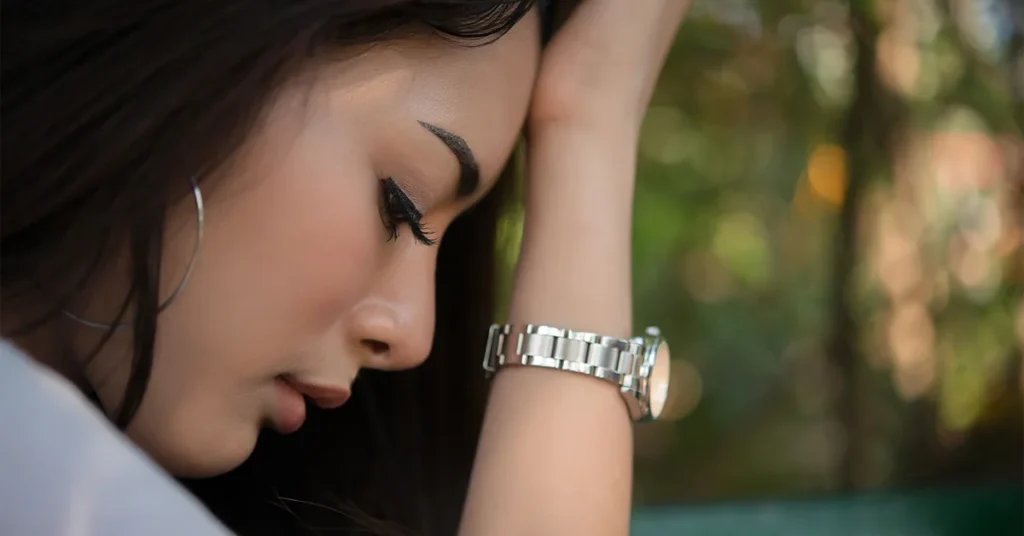Sustainability isn’t just a buzzword; it’s the future of fashion. With the growing concerns about environmental damage and social responsibility, the fashion industry is experiencing a transformative shift toward eco-friendly, sustainable practices. As we approach 2025, it’s clear that the fashion industry is on the verge of a revolution that will change how we think about style, production, and consumption. Gone are the days when fashion was synonymous with waste, overproduction, and unethical labor practices. Today, consumers are demanding more ethical choices, and brands are rising to meet this need with innovative, sustainable solutions. In this article, we will explore the top Sustainable Fashion Trends 2025 expected to dominate in 2025 and how these trends will shape the future of eco-friendly style.
ALSO READ: Top Affordable Fashion Brands That Don’t Skimp On Style
What Is Sustainable Fashion Trends 2025?
Sustainable Fashion Trends 2025 refers to clothing and accessories produced in ways that prioritize the well-being of the environment and society. It emphasizes the use of eco-friendly materials, ethical production practices, and reducing waste throughout the fashion lifecycle. Sustainable Fashion Trends 2025 encourages consumers to buy less, choose high-quality pieces that last longer, and embrace circular fashion (where items are reused, recycled, or upcycled).
As the world faces mounting environmental challenges, the call for sustainability in fashion has never been louder. The growing focus on ethical and eco-conscious choices is not only a response to environmental degradation but also a push for a more humane, transparent, and responsible fashion industry.
The Key Sustainable Fashion Trends 2025
Upcycled and Recycled Materials
One of the most exciting and innovative trends in Sustainable Fashion Trends 2025 is the increased use of upcycled and recycled materials. As textile waste continues to be a significant problem in the fashion industry, brands are finding creative ways to breathe new life into discarded fabrics and garments.
Upcycling involves taking old clothing or materials and transforming them into new, high-quality pieces. In 2025, we expect to see more designers embracing upcycled denim, fabrics sourced from old garments, and even materials like discarded fishing nets, plastic bottles, and old seatbelts being repurposed into chic, high-fashion items.
Recycling is also becoming a more prominent trend. Fabrics such as polyester, nylon, and cotton can now be recycled into new garments, reducing the need for virgin materials. As technologies improve, we’ll see an increasing number of brands utilizing cutting-edge methods to recycle textiles, reducing their environmental impact.
Natural and Organic Fabrics
Another Sustainable Fashion Trends 2025 is the use of natural and organic fabrics. These fabrics are made from renewable resources and are often grown without harmful pesticides, reducing the impact on both the environment and farmers.
Organic cotton, for example, is grown without synthetic chemicals, which makes it a more Sustainable Fashion Trends 2025 option compared to conventional cotton. Hemp, bamboo, and linen are also expected to be increasingly popular in 2025, as they are naturally biodegradable and require fewer resources to cultivate.
Consumers are becoming more conscious of the materials that make up their clothing, and brands are responding by developing eco-friendly fabrics that are both stylish and Sustainable Fashion Trends 2025. These materials not only have a smaller environmental footprint but also offer a higher level of comfort and durability.
Slow Fashion: A Shift Away from Fast Fashion
Fast fashion has been one of the biggest culprits in environmental damage and waste, with its rapid production cycles and disposable nature. However, as consumers become more aware of the environmental and ethical issues surrounding fast fashion, slow fashion is emerging as a significant trend in 2025.
Slow fashion encourages thoughtful consumption, where quality and longevity take precedence over quantity and trends. In 2025, we can expect more consumers to invest in high-quality, timeless pieces rather than chasing after fleeting trends. Brands will increasingly focus on creating durable, versatile clothing that can be worn for years, rather than producing cheap, short-lived garments.
The slow fashion movement also encourages the idea of purchasing less and choosing second-hand or vintage items. Thrift shopping is becoming mainstream, and platforms for pre-owned fashion are gaining popularity, making it easier for consumers to find unique, sustainable pieces.
Circular Fashion: Clothing as a Lifecycle
Circular fashion is one of the most exciting developments in the Sustainable Fashion Trends 2025, we’ll see more brands adopt circular models, where clothes are designed to be reused, repaired, recycled, or repurposed at the end of their life. This reduces waste and promotes a more sustainable and regenerative system for the fashion industry.
Circular fashion also emphasizes the importance of clothing repair and upkeeping. Brands are beginning to offer services where customers can send their clothes back for repairs, or they can purchase “repair kits” to extend the lifespan of their garments. This trend encourages consumers to view their clothing as an investment, rather than disposable items.
The idea of renting clothing for special occasions or everyday wear is also gaining traction. Renting allows consumers to wear high-quality, Sustainable Fashion Trends 2025 without contributing to overconsumption. Expect rental fashion services to become even more widespread in 2025.
Eco-Friendly Dyes and Finishes
Traditional dyeing processes are notoriously harmful to the environment, often using toxic chemicals that contaminate water and air. In 2025, we expect to see more brands opting for eco-friendly dyes and finishes made from natural, plant-based ingredients or even waste products.
Brands are experimenting with dyes made from food waste, such as avocado pits, coffee grounds, and beetroot, which not only reduce waste but also lower the need for harmful chemicals. Similarly, natural finishes like vegetable-based leather and plant-based textiles are gaining popularity, providing an alternative to the toxic, synthetic chemicals traditionally used in fashion production.
These eco-friendly dyes and finishes are expected to become more common in 2025, making clothing not only more sustainable but also safer for consumers to wear.
Sustainable Footwear and Accessories
Sustainable Fashion Trends 2025 isn’t limited to clothing; footwear and accessories are also undergoing a major transformation. In 2025, sustainable shoes and bags will continue to grow in popularity, with more brands opting for eco-friendly materials such as plant-based leathers, cork, and recycled fabrics.
Footwear brands are also exploring innovative technologies to create shoes that are fully recyclable or biodegradable. These shoes are designed to be broken down at the end of their life and returned to the earth, leaving no waste behind.
Similarly, accessories like bags, hats, and jewelry are being made from upcycled materials, sustainable metals, and natural fibers. In 2025, it’s expected that consumers will increasingly choose accessories made with ethical materials, as they complement the rise of conscious, Sustainable Fashion Trends 2025 choices.
Digital Fashion and Virtual Clothing
Digital fashion is on the rise, and in 2025, it is expected to become a mainstream trend. Digital clothing refers to virtual garments that are created using 3D design technology and can be worn in virtual environments, such as social media profiles, video games, or virtual reality spaces.
While digital fashion does not physically exist, it provides an eco-friendly alternative to traditional fashion consumption. By allowing consumers to wear virtual clothing instead of purchasing physical garments, digital fashion helps reduce textile waste and overproduction. This trend is particularly appealing to younger generations, who are already active in virtual worlds and social media platforms.
Transparency and Ethical Practices
In 2025, consumers will demand more transparency from brands about their sourcing, production practices, and environmental impact. The desire for ethically produced clothing will drive more brands to adopt transparent supply chains and provide detailed information about the origins of their materials and the working conditions of their labor force.
This trend is already gaining momentum, with several brands leading the way by offering traceability through blockchain technology, allowing customers to see exactly where their clothes come from and how they were made. Ethical practices, including fair wages, safe working conditions, and responsible sourcing, will become more prominent in 2025 as consumers expect greater accountability from the brands they support.
Conclusion
Sustainable Fashion Trends 2025 is all about conscious consumption, innovative materials, and responsible production. As we move further into the future, the fashion industry will continue to evolve, with a focus on reducing waste, promoting ethical practices, and embracing new technologies to create a more sustainable and eco-friendly fashion landscape. Whether it’s through upcycling materials, investing in timeless pieces, or choosing circular fashion, there are many ways for consumers to contribute to a more sustainable future.
By supporting these Sustainable Fashion Trends 2025, you’re not just making a style statement; you’re also helping to protect the planet for future generations. The future of fashion is not only stylish but also kind to the Earth — and it’s up to all of us to make it a reality.
FAQs
What is Sustainable Fashion Trends 2025?
Sustainable Fashion Trends 2025 refers to clothing and accessories produced in ways that are environmentally friendly, socially responsible, and economically viable. It involves using eco-friendly materials, ethical production methods, and reducing waste.
How does upcycling contribute to Sustainable Fashion Trends 2025?
Upcycling involves taking old clothes or materials and transforming them into new, fashionable pieces. This reduces waste and helps prevent the overconsumption of resources by giving materials a second life.
What are some popular sustainable fabrics?
Popular sustainable fabrics include organic cotton, hemp, linen, bamboo, and recycled polyester. These materials have a lower environmental impact and are often biodegradable.
What is circular fashion?
Circular fashion refers to a model where clothes are designed to be reused, repaired, recycled, or repurposed at the end of their life cycle, promoting a more sustainable and waste-free fashion system.
Why is slow fashion important?
Slow fashion emphasizes quality over quantity, encouraging consumers to buy fewer, high-quality items that last longer. This helps reduce the environmental impact of fast fashion, which is known for its waste and unethical practices.
ALSO READ: Discovering The Charm Of K Italia: Where Style Meets Tradition




